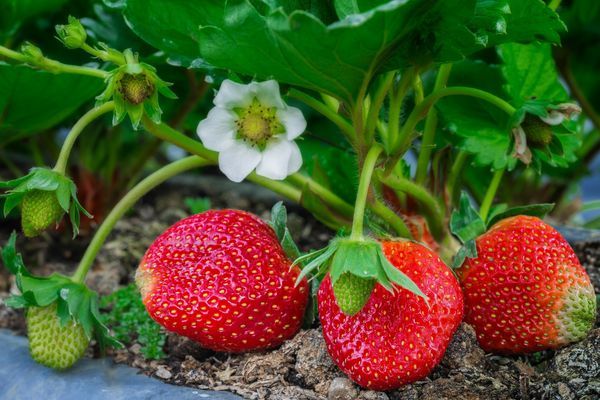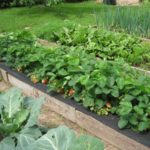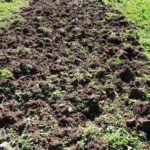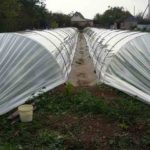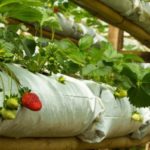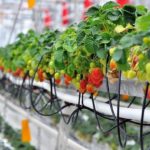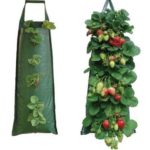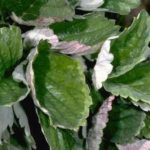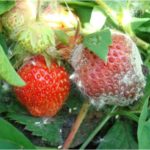Thanks to the excellent taste and great benefits of vitamins and antioxidants that make up the strawberries, this berry is a favorite treat for children and adults. Gardeners-professionals and summer cottages-beginners, will surely single out a plot for placing strawberry beds. In order to grow and harvest the highest quality crop, it is necessary to fulfill the norms and requirements prescribed in the rules of agrotechnology for growing this popular berry.
Table of contents
Tasks of strawberry cultivation
Agrotechnical techniques are due to the biological characteristics of the garden culture, the climatic conditions of the region and include:
- soil treatment;
- fertilizer application work;
- planting plants;
- care culture;
- harvesting.

Soil preparation for planting
A good choice of location will be the site where you previously grew beans, grains, onions, garlic, carrots or parsley. Such soil is considered to be decontaminated. It should be borne in mind that the berry does not like neighborhood with potatoes, cucumbers, tomatoes.
To prepare the land for planting strawberries should be carefully and in advance. Perform this work 1.5-2 months before landing of sockets. The beds are broken on a flat, well-lit area.
Lack of nutrients in the soil is compensated by the introduction of humus or humus to provide the culture with the necessary elements for nutrition. Soil should have indicators of medium acidity. With increased acidity of the soil in the fall perform liming.
Strawberries take root well and bear fruit if the soil on the site light. Otherwise, the soil is facilitated by the introduction of river sand or granite rubble of the smallest fraction (3-5 mm). The beds are covered with a layer of such material. Backfill thickness 10-15 cm.
They dig up the earth several times, achieving its looseness and uniformity. The depth of processing is not less than 25 cm. The porosity of the soil will allow young plants to take root quickly, provide them with good air exchange.
- With a high level of groundwater the bed must be raised
- For adding friability, they dig up the earth several times.
Such painstaking work at the same time will help identify the presence of insect pest larvae in the soil: wireworms, strawberry nematodes, strawberry beetle, slugs. In case of their detection, the soil is treated with ammonia water (20 kg per 100 square meters).
With a close location of groundwater to the surface of the earth, soil drainage is necessarily performed, and ridges make high (up to 40 cm).
How to properly land
Strawberry outlets planted in the ground is best in the period from August to early September, so that before the onset of cold weather plants can take root. Also considered favorable are the first days of May. It is desirable to perform work in the late afternoon or on cloudy days. This will help the plants more comfortable in postponing the planting procedure.
An important role is given to the quality of planting material. A large socket with developed roots, reaching a length of not less than 7 cm, should be formed from 3-5 leaflets of a rounded shape and must have a strong apical bud. Deepen the seedlings in the ground should be so that the heart of the bush was slightly covered with earth.
The distance between the beds of strawberries is 60-70 cm. In this case, it is convenient to take care of the plants: loosen the soil, spud, feed.
Bushes late varieties planted with an interval of 20-30 cm apart. After the first fruiting, every second plant is dug out of the row and transplanted. The result is a distance between the sockets about 40 cm.

Early varieties are planted at intervals 15 cm. To make the hole, use the bayonet. The roots of the plant, a little pruned, treated with manganese solution. Condense the soil around the outlet should not be - healthy development of strawberry roots will receive only in very loose soil.
After planting, strawberries are poured over with water at room temperature and covered with a layer of mulch. For mulching use sawdust, dry grass, peat, chopped straw.
After that, the old bush is removed to prevent degeneration of the variety and accumulation in the soil of various viruses and bacteria harmful to the berry.
Ordinary strawberries bear fruit once a season. Crop harvested within two weeks. There are early and late varieties of berries, superior in taste to remontant varieties, but inferior to them in size.
Remontnaya strawberries bear fruit year round. But it dies much faster. The life of one bush - up to 3 years.
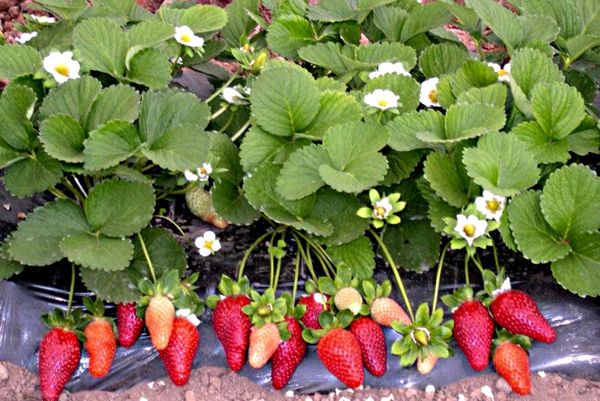
The beds are of several types:
- classic (width 80-100 cm, landing up to 5 lines);
- film tunnels (high and low use in regions with a cold climate or when planting early varieties, but in hot weather the film needs to be removed);
- plastic bags (they are filled with soil, laid on the ground and planted seedlings, ensuring its regular watering and fertilizing);
- vertical beds (barrels, pipes, various hanging containers, pots, bags, columns);
- hydroponic cultivation (the soil is not used, nutrient solutions are fed to the roots of plants using automation).
- Growing in film tunnels
- In bags
- Hydroponic method
- Upright
Strawberry care after planting
Here the foreground is watering. It is best to carry out with the help of a watering can with a nozzle for atomized irrigation. Being a moisture-loving plant, strawberries do not tolerate waterlogging.
The first 10-14 days of the beds should be watered. daily. As the bushes are rooting, the frequency of watering is reduced up to 1 time in 2 days. Be sure to at the same time it is necessary to ensure that the soil was always wet, but not wet.
It is required to systematically weed and loosen the soil on the ridge and between the rows. Loosening is done a month after the disembarkation of outlets. This procedure is not only a preventive measure against weeds, it increases the access of oxygen to the roots of the plant.
It is recommended to regularly cut the strawberry whip (mustache). Staying on the plant, the mustache takes on most of the nutrients, not allowing it to fully develop.

Marigolds can be planted along the perimeter of the landings. Such plantings will block the strawberries from excessive sun during the heat and reduce weed shoots. You can sow parsley between the beds, the smell of which will scare away slugs.
Top dressing and leaving in the fall
Gardeners take off a big harvest of berries only in the second year after planting. The agricultural technology of growing strawberries provides for three plant feedings per year:
- Early spring. At this time, the plants cut the leaves and enrich the soil with mineral fertilizers, which can be replaced with organic (chicken droppings). The diluted composition contribute under the root of each plant.
- The period of formation of buds and ripening berries. It is time to make potash fertilizers.
- Period after harvest. Now they are feeding with mineral or organic fertilizers that will help the plants to actively grow and bear fruit next year. Urea is used for this purpose, given that 30 g of dry fertilizer is consumed for 10 liters of water.
Old leaves on strawberry bushes should be pruned. All garbage collected must be burned, because it may contain pathogens dangerous to strawberries.
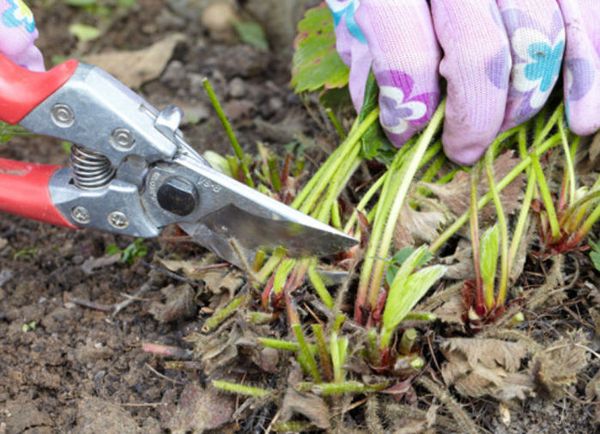
The plant perezimuet well under a layer of snow thick 20-25 cm. In snowy regions, before the onset of winter, the ridge with strawberries should be mulched using sawdust, twigs, splinters or straw. Such a shelter will allow the berry to survive in the cold. When the snow falls, you should rake it on the beds, forming a kind of blanket.
Diseases and their prevention
The most common diseases for culture - powdery mildew and gray mold. Their source is the remnants of diseased plants that have not been harvested since last year.
Powdery mildew infection is signaled by twisted strawberry leaves. Their color becomes brown. The same color takes the stem of the plant. Fruits rot, grow moldy, get the smell of mushrooms. A solution of sulfamide will help fight this disease.
- Mealy dew
- Gray rot
Gray rot - fungal disease. About infection says the appearance of a gray bloom on the berries. To prevent the spread of the disease, you need to remove the affected berries.
As a preventive measure, treating plants before and after flowering with the horus fungicidal agent at the rate of 6 g of the fungicide per 10 liters of water. If the tool is used during the formation of the ovary, the amount of the drug is halved: 3 g per 10 liters of water. For the treatment of 100 square meters of land will be enough 5 liters of solution.
Strawberry mite and weevil can also cause irreparable damage to the crop, eating the leaves, because of which the process of photosynthesis is disturbed. The sheet plates are covered with black dots, then become completely black.
During the entire period of growth, flowering and ripening of the crop, Chorus (0.7 kg) and the insecticide Actellic (0.6 l) can be used together to control these pests.The resulting volume of solution is enough for the preventive treatment of 1 hectare of area. Often used spraying beds karbofosom, diluted in warm water.
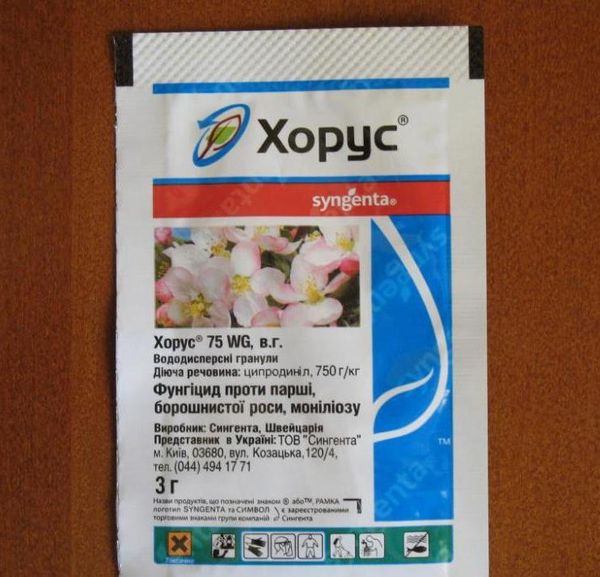
If brown or white spots appear on the leaflets, the plant treated with soapy water. This procedure is recommended for prevention in the fall and spring. It is required to promptly remove reddened leaves from the bushes.
Each gardener will have a secret on growing and caring for strawberries, adapted to their site and climate. Getting a quality crop depends on compliance with the rules of agricultural technology.
